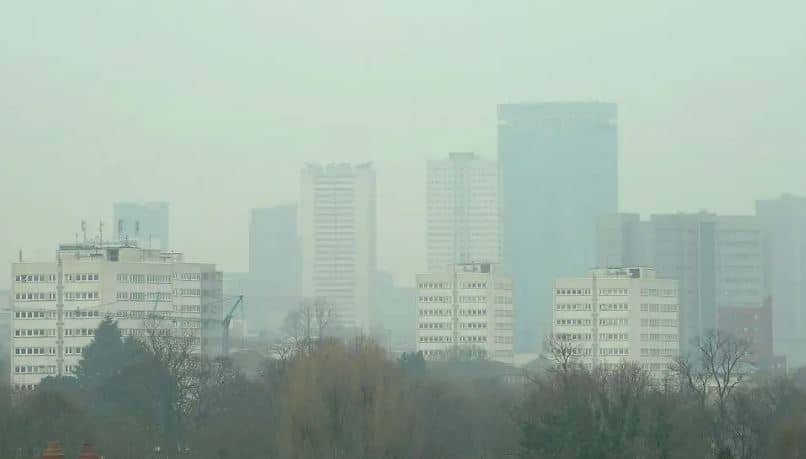-
Phone Number
-
Email Address
We know that air pollution is harmful to the environment and our bodies, but we are still learning the extent of its effects. HE Know what; there is a risk of respiratory diseases, fatigue and headaches, anxiety, cardiovascular damage, damage to reproductive organs, damage to the liver, system nervous etc.
Urban air pollution is the suffered by users of cities, especially the ozone at ground level, taking into account the growth exponential increase in cities, and therefore more population exposed to contaminants (See article pollution map of air and atmosphere in real time).
A common question… What is the difference between the ambient air pollution and air pollution urban? Ambient air pollution is a broader definition that applies to air pollution in the outside environment. On the contrary, contamination Urban air pollution is outdoor air pollution that affects the inhabitants of cities.
The main effects of air pollution in human health would be those of the following graph to broad strokes, but, in reality, there is much more.
Although we more or less have an idea of how the Air pollution affects us . There are also others strangest forms according to different reports published in international scientific journals. So let's investigate a little more…
Content menu:
When we think about the “price” that pollution exacts for our health, we tend to think of it in terms of its physical impact. But studies have shown that this goes beyond physical health; our cognitive abilities They can also be affected when we talk about the atmospheric air quality particularly in the cities.
A study conducted in China and published in PNAS. Found breathing unsafe air for too long can create an effect that is equivalent to losing a year of intelligence , The Guardian reported. According to the collected research, those who are exposed constantly exposed to polluted air can experience a great drop in language and arithmetic scores.
According to research team member Xi Chen of the Yale School of Public Health…. We know that the effect is worse for the elderly, especially those over 64 years»
Researchers examined tests of language and arithmetic as part of the Family Panel Studies of China to 20,000 people throughout the country between the years of 2010 to 2014. The results were studied in correlation with the amount of nitrogen oxide and pollution levels of sulfur dioxide in the air at that time.
The longer individuals were exposed to the noxious air, the greater the loss of cognitive functioning. Language skills were more affected than arithmetic.
A study conducted by the Hong Kong Polytechnic University King revealed that those with mental and behavioral disorders behavior are more likely to die in the days when air pollution reaches heights extreme . The research was published in Environmental International.
A decade of records and statistics of deaths, and found that the risks of death increase a 16% on the first day of heavy fog, rising to 27% on the second day.

For the study, researchers examined the relationship between the risk of death and foggy days. The days of Hazes are when the level of pollutants in the air is high enough to obscure the visibility of the heaven.
“Although a foggy day generally has 2.9% more risk [of death] that on a day without fog, there is a very strong adverse effect on mortality associated with mental and behavioral disorders," says the team at investigation. "A combined influence of the mist, the extreme climate and air quality and the urban environment can result in extremely high mortality.”

Investigative team member Lin Yang of the Hong Kong Polytechnic University told The Guardian. "Is foggy days are highly likely to trigger a response of acute depression in people. This has been shown in surveys in Indonesia, where there was a major haze disaster because of the forest fires.”
“We have shown that air pollution could be causing substantial harm to our health mentally, which makes the case for cleansing the air that breathe is even more urgent» , Isobel Braithwaite, from University College London (UCL).
Researchers in Sweden conducted a study that found a connection between air pollution and the increased risk of mental illness in children. He study was published in the journal BMJ Open.
Researchers reviewed the medical records of 500,000 Swedes under the age of 18 and found that more children and adolescents who lived in areas where contamination atmospheric pressure was higher, they were prescribed medications such as antipsychotics and sedatives for various disorders psychiatric.
According to Anna Oudinof of the University of Umea… “The results may mean that a lower concentration of the pollution in the air, can reduce disorders psychiatric disorders in children and adolescents.”
Interestingly, Sweden is not known for its high air pollution. This suggests that other countries and world cities have an even bigger challenge. We remember that the indoor air of homes is also important and we can learn from the article on how to create houses comfortable and healthy.
A study published in the journal Fertility and Sterility suggests that air pollution may increase the risk of miscarriage early in pregnancy by more than 10%.
Researchers at the National Institute of Child Health and Development of the United States examined the records of a long-term study conducted by the Institutes National Health Institute that studied 501 couples between 2005 and 2009.

Of the 501 couples, the women of 343 of the couples got pregnant; 98 of the 343 women (28%) had a miscarriage within 18 weeks of pregnancy.
Exposure to air pollution was found to of air in ozone increased the risk of miscarriage by 12%, and that exposure to airborne particles increased the risk to 13% . It is not clear that the air pollution was the direct cause of abortions, but researchers believe there may be a association.
Dr. Jill Rabin, co-chief of ambulatory care at the Women's Health Programs-Northwell PCAP Services Health in New Hyde Park, New York, suggests that toxins may be able to directly penetrate the placenta and cause harm to the fetus.
A study published in Environmental International, carried out by researchers from the Environmental Institute of Stockholm from York University. he saw that approximately 2.7 million preterm births worldwide (18%) were potentially related to a harmful atmospheric fine particulate matter , known as PM2.5.
In polluted air , PM2.5 are particles fines that come mainly from burning waste agriculture, forest fires, power plants, diesel vehicles and airplanes. They are particularly harmful to the lungs.
According to researcher Chris Malley… “This study stresses that air pollution can not only harm people who breathe the air directly, but rather It can also seriously affect an unborn baby. mother» .
The number of preterm births in southern and eastern Asia was mind blowing. About 1 million of the 2.7 million of premature births are believed to be related to high amounts of PM2.5 that were produced in India, and 500,000 in China.
A study conducted by the School of Public Health in Harvard, suggests a connection between air pollution and the risks of autism in children.
A child could be twice as likely to develop autism if born to a mother exposed to high levels of polluting particles during its pregnancy , especially during the third trimester of it.

According to Marc Weisskopf, lead author of the study… “Our data add important additional support to the hypothesis of that maternal exposure to air pollution contributes to the risk of autism spectrum disorders.”
The research team examined data from the participants according to their place of residence and the United States Environmental Protection Agency (EPA).
Children who lived in areas where there is a greater concentration of PM2.5 in polluted air, had more chances of being diagnosed with autism. The connection between autism and PM2.5 exposure was considered before, during (including each trimester) and after pregnancy.
In 2017, UNICEF released a report finding that 17 million babies under one year of age who live in the southern in Asia breathe toxic air, which can hamper their brain development.
The ways in which air pollution affects the brain of babies are mostly questions neurological . Suspended particles in cities that are equal to or less than 2.5 microns, can enter into our bloodstream with relative ease and reach the brain with little effort, damaging the blood-brain barrier and causing damage.

Damage to the blood-brain barrier can cause a neuroinflammation that can cause conditions of neurodegeneration. Although children are not in danger of suffering from Alzheimer's at such a young age, exposure to anything that causes neurodegeneration at a stage of development can be considered detrimental.
In addition, particles in air pollution such as magnetite – the most magnetic of all natural minerals – are so tiny in size that they can enter the body through through the intestine and the olfactory nerve. The toxicity of the magnetite is due to its magnetic charge that creates stress oxidative. Oxidative stress is also capable of causing neurodegenerative conditions.

Polycyclic aromatic hydrocarbons, contaminants formed from fossil fuels, have shown that cause damage to the white matter of the brain. white matter It is responsible for neural communication within the brain. Without properly functioning white matter, communication between neurons becomes difficult.
These three factors of contamination environment can cause significant challenges for the development of a healthy and functional brain. And be careful with the effects of air conditioning at home.
It has also been suggested that exposure to Atmospheric air pollution can cause changes in our DNA . Researchers from the University of British Columbia asked for volunteers to sit in a walled aquarium where the levels of pollution of the most polluted cities in the world.

The results were the same for all participants, which means that the connection between the DNA alteration and heavy contamination is a big possibility.
Air pollution can weaken our bones . After measuring PM2.5 levels in Hyderabad, in southern India, researchers analyzed the health of 3,717 people who lived in 28 towns in the surroundings. They looked for changes in the mineral content of bones, which is used to measure the strength of the bones and diagnose osteoporosis.
According to co-author Cathryn Tonne of the Institute of Health Global de Barcelona specialist in effects on the air pollution on health …»What we see in overall it's a pretty consistent pattern of lower content bone mineral with increasing levels of contamination atmospheric»

People who were exposed to levels of pollution PM2.5 annual average of 32.8 micrograms per cubic meter (three times higher than what is considered safe by the World Health Organizations). the researchers found that every additional 3 micrograms per cubic meter of PM2.5 was associated with a relatively minimal drop, but still noticeable, in the bone mineral density of the spine vertebral and hip.
We remind you that the World Health Organization (WHO) has an excellent section on